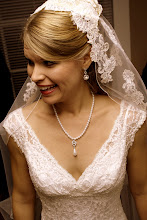I just wanted to send out a quick update that I am well and safe! I spent the last couple of weeks working in a clinic just outside of Port Au Prince and then running a guest house for the teams rotating through. Whew! It was great and tiring and exhilarating work! And thankfully, it's my turn on the rotation schedule for a break! I'll be out for 2 weeks to rest up, and I'll try to post stories and pictures every few days as I process and grieve for the incredible people of Haiti.
Let me tell you a little more about the clinic today, and I'll try to write stories of my sweet patients over the next few days...
I met up with a medical team that flew in from Michigan-- what an incredible group of people to work with! We have established a clinic in Peti Goave, which is the town next to the epicenter of the earthquake; it's 40 miles outside of Port Au Prince. We have averaged 120-300 patients each day. We did wound care, quake injuries, and general medical complaints. We saw obvious closed fractures, with forearms bent at a 45 degree angle. Almost everyone that I saw the first day had a cement wall fall on them. We saw wounds that had been sutured (stitched up) on the first day, but had not been cleaned first. So, we removed the stitches on days 8 and 9 after the quake, and the wounds fell open and we scrubbed ROCKS out of them! I would start debriding (removing non-viable tissue) on a small dime sized wound, and by the time I had reached viable tissue, the wound was the size of a fifty cent piece and down to the bone. We started without even local anesthetic, and as awful as it was to cut away skin with a scalpel without any numbing medicine, it was so vital to do that to save people's arms and legs from gangrene and to save their lives. I assisted with several finger and toe amputations. We did awful, necessary things to save lives.
All of the people in Peti Goave are living in tents made from sheets in the street, as no one trusts the structural stability of their homes if its still standing. The cooler evening temperates and the stress of the quake are contributing to a rise in general medical problems-- we're seeing malaria and typhoid along with the normal hypertension and diabetes. Normal medical clinics are not functioning, so primary care is half of what we've seen this week.
There is a hospital less than a mile down the road. Currently, there are mainly Cubans there who speak very little Creole. It's almost completely out of supplies. We had a surgeon here this week who was invited over to do several surgeries. He brought supplies with him from our clinic.
We camped out at the clinic in very primitive conditions. Our amazing hosts at the clinic/camp site are the Haitian general superintendent's wife and several Wesleyan church members. They do laundry and cook. There is no running water. They turn a generator on for a few hours each evening, and after that, there is no electricity. There are rats in the building that we slept in.
I found that the most valuable traits for this week were flexiblity and creativity, in both the living and working environment. When you do not have the medical supplies or the streile environment of your hospital back home, you have to be ready to creatively treat and adapt to the problem. All the while, we tried to be as compassionate as we could, but still be prepared to be flexible in our treatment plans.
What a crazy, incredible experience! So, that sets the background for more stories... more to come soon!

1 comment:
Diane! Just wanted to say hello, thank you, miss you, and what wonderful work you are doing! I talked to Lauren this morning, and she commented that remember way back when, that you had this strong heart's desire to go to Haiti - and look how it's placed you exactly where you're needed the most. We all love you. Thank you so much for helping, you are doing a great work.
Post a Comment